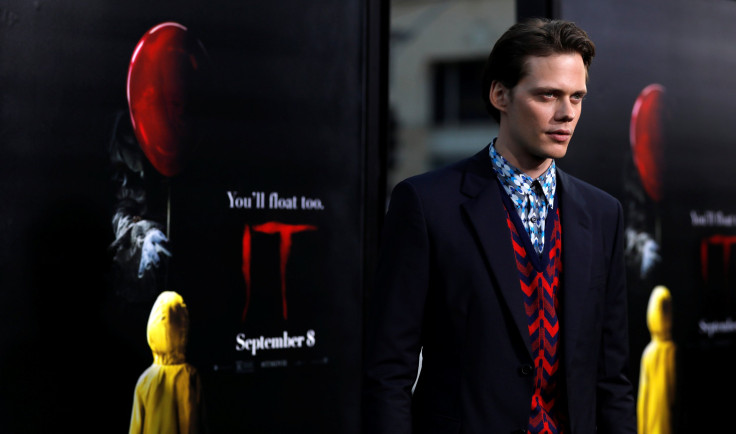Could The Success Of 'It' Movie Help Encourage Fear Of Clowns?

Warner Bros. and New Line Cinema's "It" proved to be a box-office smash over the weekend as it opened to $123 million. Based on the acclaimed Stephen King novel of the same name, the big-screen readaptation enforced the long-existing idea that clowns are still terrifying.
Pennywise, the film's antagonist portrayed by Bill Skarsgård, might be considered the most terrifying clown in cinema history. Clown characters like Pennywise are a staple in popular culture, but Hollywood may not be solely responsible for causing Coulrophobia — fear of clowns.
University of California at Los Angeles (UCLA) professor Richard Walter told IBT Tuesday, "Isn't it natural — and also wise — to fear someone wearing floppy freaky clothes, size forty shoes with white makeup covering his [or] her face, and a big red bulb of a nose?"
"The movie theater is a safe place harmlessly to experience extreme emotions that, in the real world, would be dangerous. It's how we rehearse for tragedy and trauma, and [it] enables us to better process such unavoidable aspects of the human condition," Walter continued. "Successful films don't have to make their audiences feel good, they merely have to make them feel."
Coulrophobia originated in the 1980s, but it's still a relatively new concept. Individuals who fear clowns are few and far between, according to Smithsonian. Several people strongly dislike clowns, including children — who clowns are meant to provide entertainment and laughter for. Clowns are supposed to be silly and fun entities, but they've transformed into creepy and evil beings for many. The fear stems from the inability to distinguish the clown's emotions from its face.
"They're hiding their natural face," Frank Farley, a professor at Temple University, told Today on Aug. 8. "It can raise suspicion or fears. Are we in danger? Should we be concerned to be in the presence of the individual?"
Sigmund Freud's "uncanny valley" theory offers an explanation for Coulrophobia. Uncanny valley explains how the familiar can simultaneously be oddly unfamiliar, which will elicit fear as a response. This would encourage cognitive dissonance, which is a term that describes a situation involving inconsistent attitudes, beliefs or behaviors. It's a psychological stress, to simply put it.
"One such is the 'uncanny.' There is no doubt that this belongs to the realm of frightening, of what evokes fear and dread," Freud wrote in an essay. "One may presume that there exists a specific affective nucleus, which justifies the use of a special conceptual term... [it] allows us to distinguish the uncanny within the field of the frightening."
To apply Coulrophobia to Freud's theory, an individual experiencing the fear will accompany it by a discomforting effect. This, in turn, could lead to a rejection of the clown because the individual is uncomfortable with its presence.
"People are typically frightened by things which are wrong in some way, wrong in a disturbingly unfamiliar way," Paul Salkovskis of the Maudsley Hospital Centre for Anxiety Disorders and Trauma in London said, according to Psychology Today.
It's challenging to determine whether a clown is happy, sad, confused or angry underneath all the makeup. This can be problematic for many, especially children. The Child Mind Institute (CMI) claimed in 2016 that clowns have continued to be a fear for many over the course of time, but King's novel and "It" movie reboot aren't completely at fault.
"Stories like Stephen King's 'It' — a new movie is coming out next year — [are] transforming children's entertainers into sadistic murderers," CMI wrote. "But the fact is, clowns are frightening to many people even without the help of the King of Horror."
"It" earned the third-largest opening of 2017, reportedly knocking "Spider-Man: Homecoming" out of its slot. "It" also managed to earn the highest box office debut for a horror flick.
Follow me on Twitter @dory_jackson
© Copyright IBTimes 2025. All rights reserved.






















